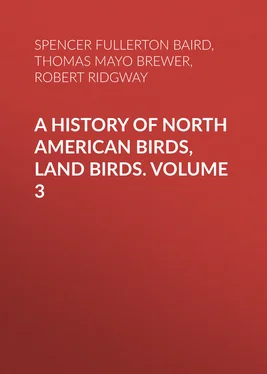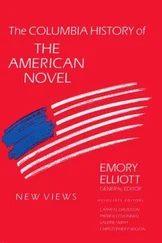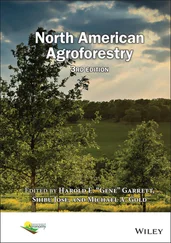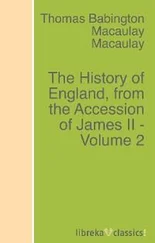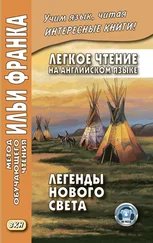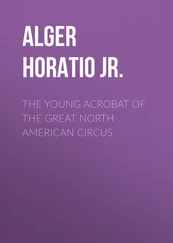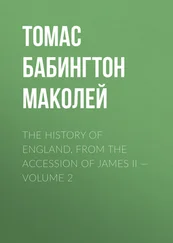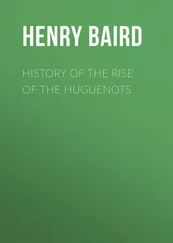Spencer Fullerton Baird - A History of North American Birds, Land Birds. Volume 3
Здесь есть возможность читать онлайн «Spencer Fullerton Baird - A History of North American Birds, Land Birds. Volume 3» — ознакомительный отрывок электронной книги совершенно бесплатно, а после прочтения отрывка купить полную версию. В некоторых случаях можно слушать аудио, скачать через торрент в формате fb2 и присутствует краткое содержание. Жанр: foreign_antique, Биология, foreign_edu, на английском языке. Описание произведения, (предисловие) а так же отзывы посетителей доступны на портале библиотеки ЛибКат.
- Название:A History of North American Birds, Land Birds. Volume 3
- Автор:
- Жанр:
- Год:неизвестен
- ISBN:нет данных
- Рейтинг книги:5 / 5. Голосов: 1
-
Избранное:Добавить в избранное
- Отзывы:
-
Ваша оценка:
- 100
- 1
- 2
- 3
- 4
- 5
A History of North American Birds, Land Birds. Volume 3: краткое содержание, описание и аннотация
Предлагаем к чтению аннотацию, описание, краткое содержание или предисловие (зависит от того, что написал сам автор книги «A History of North American Birds, Land Birds. Volume 3»). Если вы не нашли необходимую информацию о книге — напишите в комментариях, мы постараемся отыскать её.
A History of North American Birds, Land Birds. Volume 3 — читать онлайн ознакомительный отрывок
Ниже представлен текст книги, разбитый по страницам. Система сохранения места последней прочитанной страницы, позволяет с удобством читать онлайн бесплатно книгу «A History of North American Birds, Land Birds. Volume 3», без необходимости каждый раз заново искать на чём Вы остановились. Поставьте закладку, и сможете в любой момент перейти на страницу, на которой закончили чтение.
Интервал:
Закладка:
The Owls constitute a very natural and sharply limited family, and though the species vary almost infinitely in the details of their structure, they all seem to fall within the limits of a single subfamily.
They have never yet been satisfactorily classified, and all the arrangements which have been either proposed or adopted are refuted by the facts developed upon a close study into the true relationship of the many genera. The divisions of “Night Owls,” “Day Owls,” “Horned Owls,” etc., are purely artificial. This family is much more homogeneous than that of the Falconidæ , since none of the many genera which I have examined seem to depart in their structure from the model of a single subfamily, though a few of them are somewhat aberrant as regards peculiarities in the detail of external form, or, less often, to a slight extent, in their osteological characters, though I have examined critically only the American and European species; and there may be some Asiatic, African, or Australian genera which depart so far from the normal standard of structure as to necessitate a modification of this view. In the structure of the sternum there is scarcely the least noticeable deviation in any genus 7 7 I have, however, examined the sterna only of Nyctea , Bubo , Otus , Brachyotus , Syrnium , Nyctale , and Glaucidium .
from the typical form. The appreciable differences appear to be only of generic value, such as a different proportionate length of the coracoid bones and the sternum, and width of the sternum in proportion to its length, or the height of its keel. The crania present a greater range of variation, and, if closely studied, may afford a clew to a more natural arrangement than the one which is here presented. The chief differences in the skulls of different genera consist in the degree of pneumaticity of the bones, in the form of the auricular bones, the comparative length and breadth of the palatines, and very great contrasts in the contour. As a rule, we find that those skulls which have the greatest pneumaticity (e.g. Strix and Otus ) are most depressed anteriorly, have the orbital septum thicker, the palatines longer and narrower, and a deeper longitudinal median valley on the superior surface, and vice versa .
The following classification is based chiefly upon external characters; but these are in most instances known to be accompanied by osteological peculiarities, which point to nearly the same arrangement. It is intended merely as an artificial table of the North American genera, and may be subjected to considerable modification in its plan if exotic genera are introduced. 8 8 My unpublished determinations of the North American species were furnished, by request, to Dr. Coues, for introduction into his “Key of North American Birds”; consequently the names used in these pages are essentially the same as those there employed.
Genera and Subgenera
A.Inner toe equal to the middle in length; inner edge of middle claw pectinated. First quill longer than the third; all the quills with their inner webs entire, or without emargination. Tail emarginated. Feathers of the posterior face of the tarsus recurved, or pointed upwards.
1. Strix.No ear-tufts; bill light-colored; eyes black; tarsus nearly twice as long as middle toe; toes scantily haired. Size medium. Ear-conch nearly as long as the height of the skull, with an anterior operculum for only a portion of its length; symmetrical.
B.Inner toe decidedly or much shorter than the middle; inner edge of middle claw not pectinated. First quill shorter than the third; one to six outer quills with their inner webs emarginated. Tail rounded. Feathers of the posterior face of the tarsus not recurved but pointed downwards.
I. Nostril open, oval, situated in the anterior edge of the cere, which is not inflated.
a. Cere, on top, equal to, or exceeding, the chord of the culmen; much arched. Ear-conch nearly as long as the height of the skull, with the operculum extending its full length; asymmetrical.
2. Otus.One or two outer quills with their inner webs emarginated. With or without ear-tufts. Bill blackish; iris yellow. Size medium.
Ear-tufts well developed; only one quill emarginated … Otus.
Ear-tufts rudimentary; two quills emarginated … Brachyotus.
b. Cere, on top, less than the chord of the culmen; gradually ascending basally, or level (not arched). Ear-conch nearly the height of the skull, with the operculum extending only a part of its full length, or wanting entirely.
† Anterior edge of the ear-conch with an operculum; the two ears asymmetrical.
3. Syrnium.Five to six outer quills with their inner webs emarginated. Top of cere more than half the culmen. Without ear-tufts. Bill yellow; iris yellow or black. Size medium or large.
Six quills emarginated; toes densely feathered, the terminal scutellæ concealed; iris yellow. Size very large … Scotiaptex.
Five quills emarginated; toes scantly feathered, the terminal scutellæ exposed; iris black. Size medium … Syrnium.
4. Nyctale.Two outer quills with inner webs emarginated. Top of cere less than half the culmen, level. Without ear-tufts. Bill yellow or blackish; iris yellow. Size small.
†† Anterior edge of the ear-conch without an operculum. The two ears symmetrical. Tail slightly rounded, only about half as long as the wing.
5. Scops.Two to five quills with inner webs emarginated; second to fifth longest. Bill weak, light-colored. Ear-conch elliptical, about one-third the height of the head, with a slightly elevated fringed anterior margin. Size small; ear-tufts usually well developed, sometimes rudimentary.
6. Bubo.Two to four outer quills with inner webs emarginated; third to fourth longest. Bill robust, black. Ear-conch elliptical, simple, from one third to one half the height of the skull. Size large. Ear-tufts well developed or rudimentary.
Ear-tufts well developed. Two to three outer quills with inner webs emarginated; lower tail-coverts not reaching end of the tail. Toes covered with short feathers, the claws exposed, and bill not concealed by the loral feathers … Bubo.
Ear-tufts rudimentary. Four outer quills with their inner webs emarginated; lower tail-coverts reaching end of the tail. Toes covered with long feathers, which hide the claws, and bill nearly concealed by the loral feathers … Nyctea.
††† Similar to the last, but the tail graduated, nearly equal to the wing.
7. Surnia.Four outer quills with inner webs emarginated. Third quill longest. Bill strong, yellow; ear-conch simple, oval, less than the diameter of the eye. Size medium; no ear-tufts.
II. Nostril, a small circular opening into the surrounding inflated membrane of the cere. Ear-conch small, simple, oval, or nearly round, without an operculum.
First quill shorter than the tenth.
8. Glaucidium.Third to fourth quills longest; four emarginated on inner webs. Tarsus about equal to the middle toe, densely feathered. Tail much more than half the wing, rounded. Bill and iris yellow. Size very small.
9. Micrathene.Fourth quill longest; four emarginated on inner webs. Tarsus a little longer than middle toe, scantily haired. Tail less than half the wing, even. Bill light (greenish ?); iris yellow. Size very small.
First quill longer than sixth.
10. Speotyto.Second to fourth quills longest; three emarginated on inner webs. Tarsus more than twice as long as middle toe, closely feathered in front to the toes, naked behind. Tail less than half the wing, slightly rounded. Bill yellowish; iris yellow. Size small.
Читать дальшеИнтервал:
Закладка:
Похожие книги на «A History of North American Birds, Land Birds. Volume 3»
Представляем Вашему вниманию похожие книги на «A History of North American Birds, Land Birds. Volume 3» списком для выбора. Мы отобрали схожую по названию и смыслу литературу в надежде предоставить читателям больше вариантов отыскать новые, интересные, ещё непрочитанные произведения.
Обсуждение, отзывы о книге «A History of North American Birds, Land Birds. Volume 3» и просто собственные мнения читателей. Оставьте ваши комментарии, напишите, что Вы думаете о произведении, его смысле или главных героях. Укажите что конкретно понравилось, а что нет, и почему Вы так считаете.
